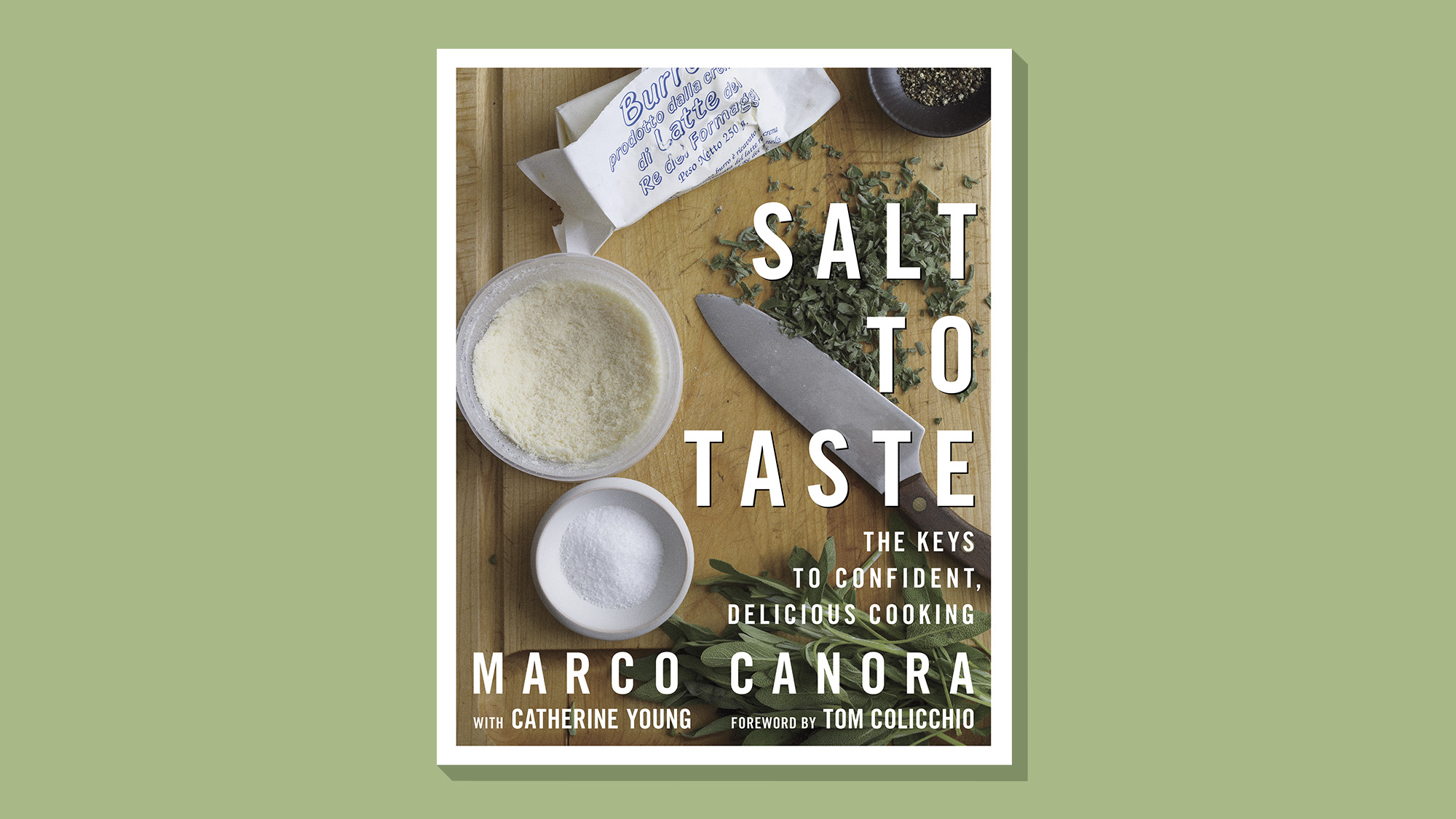One great cookbook: 'Salt to Taste'
Your roadmap to satisfying Italian home cooking


When you make a purchase using links on our site, The Week may earn a commission. All reviews are written independently by our editorial team.
If you have read even a smidge about Italian cooking, you have encountered the adage that Italian food is all about simplicity. Defining simplicity, though, is not always simple. Marco Canora's "Salt to Taste: The Keys to Confident, Delicious Cooking," published in 2009, traces the ways simplicity materializes in Italian-inspired cooking.
Successful simplicity demands either minimal or standout ingredients and also precise cooking technique and resourcefulness. Canora, the chef-owner of New York City's Hearth restaurant and also the arguable progenitor of the bone broth craze thanks to his brothy endeavor Brodo, shows you how these are endgames you can achieve at home.
The Week
Escape your echo chamber. Get the facts behind the news, plus analysis from multiple perspectives.

Sign up for The Week's Free Newsletters
From our morning news briefing to a weekly Good News Newsletter, get the best of The Week delivered directly to your inbox.
From our morning news briefing to a weekly Good News Newsletter, get the best of The Week delivered directly to your inbox.
Generational wealth
Canora's family hails from Tuscany, so "Salt to Taste" is riddled with the flavors of that central Italian region. Cacciucco is a seafood stew teeming with squid, clams, mussels and shrimp, its base piquant with tomato puree, white wine and dried oregano. Tuscan kale, aka dinosaur or lacinato kale, steps into the spotlight across the book. Its appearance predates the wrinkly vegetable's ubiquity so much so that Canora calls it "black cabbage."
He directs you to strip it of its ribs, then toss the leaves in a zip-top bag and store in the freezer. Then when you go to make yet another iconic Tuscan dish, the vegetable soup known as ribollita, you remove the kale from the freezer and "when you crush the frozen cabbage, it winds up in a million little pieces — just what you want." The leaves are put to softer use in a risotto with sausage and in a nonchalant braise alongside chickpeas served over soft polenta.
Two sides of simple
Little in "Salt to Taste" exemplifies Canora's proficiency in showing you how to build flavor like his pasta e fagioli. You first warm pieces of bacon and either prosciutto or pancetta in olive oil, then when the meaty bits have rendered their fat, you add diced onions. Cook down. Add chopped garlic. Cook down. Add fresh rosemary and sage. Cook down. Then comes tomato paste and, yes, more cooking down. Tier upon tier of compounding flavor are established before broth and beans are added. Right before serving, you boil short pasta like ditalini or elbow macaroni and mix it into the soup. Finish with a nub of butter and a dusting of Parmigiano, along with fresh ground black pepper and a lash of olive oil. Bowls of deep-seated comfort.
Canora's stracciatella sits at the other side of the swinging pendulum. It is no more than good homemade broth into which you add eggs that have been mixed with Parmigiano, parsley and a whisper of nutmeg. Cover the pot and let sit for a few minutes. Whisk the eggs and they transform into wispy rags. Five ingredients, plus salt and pepper. See? Simplicity is multivalent. In Marco Canora's hands it is also reliably gratifying.
A free daily email with the biggest news stories of the day – and the best features from TheWeek.com
Scott Hocker is an award-winning freelance writer and editor at The Week Digital. He has written food, travel, culture and lifestyle stories for local, national and international publications for more than 20 years. Scott also has more than 15 years of experience creating, implementing and managing content initiatives while working across departments to grow companies. His most recent editorial post was as editor-in-chief of Liquor.com. Previously, he was the editor-in-chief of Tasting Table and a senior editor at San Francisco magazine.
-
 How to financially prepare for divorce
How to financially prepare for divorceThe Explainer Facing ‘irreconcilable differences’ does not have to be financially devastating
-
 Why it’s important to shop around for a mortgage and what to look for
Why it’s important to shop around for a mortgage and what to look forThe Explainer You can save big by comparing different mortgage offers
-
 4 ways to save on rising health care costs
4 ways to save on rising health care costsThe Explainer Health care expenses are part of an overall increase in the cost of living for Americans
-
 The 8 best comedy movies of 2025
The 8 best comedy movies of 2025the week recommends Filmmakers find laughs in both familiar set-ups and hopeless places
-
 The best drama TV series of 2025
The best drama TV series of 2025the week recommends From the horrors of death to the hive-mind apocalypse, TV is far from out of great ideas
-
 The most notable video games of 2025
The most notable video games of 2025The Week Recommends Download some of the year’s most highly acclaimed games
-
 The best food books of 2025
The best food books of 2025The Week Recommends From mouthwatering recipes to insightful essays, these colourful books will both inspire and entertain
-
 8 restaurants that are exactly what you need this winter
8 restaurants that are exactly what you need this winterThe Week Recommends Old standards and exciting newcomers alike
-
 7 bars with comforting cocktails and great hospitality
7 bars with comforting cocktails and great hospitalitythe week recommends Winter is a fine time for going out and drinking up
-
 7 recipes that meet you wherever you are during winter
7 recipes that meet you wherever you are during winterthe week recommends Low-key January and decadent holiday eating are all accounted for
-
 7 hot cocktails to warm you across all of winter
7 hot cocktails to warm you across all of winterthe week recommends Toddies, yes. But also booze-free atole and spiked hot chocolate.
